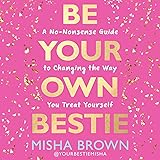The journey to lasting personal and professional achievement often hinges on one crucial element: self-discipline. As Jim Rohn powerfully articulates in the accompanying video, it’s the bridge that connects our deepest desires with tangible accomplishment. Without this foundational strength, even the most ambitious intentions can remain just that – intentions. But how does one truly master self-discipline, especially when faced with daily distractions and the natural human inclination towards comfort?
For many, the concept of self-discipline feels like a constant uphill battle against one’s own impulses. It might seem like an elusive trait reserved for a select few. Yet, the truth is, self-discipline is a skill, a muscle that can be developed and strengthened over time with the right approach and consistent effort. It’s not about perfection, but about consistent progress, making choices that align with your long-term vision, even when it’s challenging.
This comprehensive guide expands on Jim Rohn’s insightful teachings, diving deeper into practical strategies for cultivating this vital trait. We’ll explore actionable techniques to help you transform fleeting motivation into unwavering commitment, empowering you to take ownership of your life and steer it towards your most important goals.
1. The Power of Small Commitments: Building Momentum with Micro-Habits
One of the most common misconceptions about self-discipline is that it requires monumental effort from day one. People often envision drastic overhauls, aiming to tackle huge goals all at once, only to find themselves overwhelmed and quickly discouraged. However, as the video highlights, true discipline often begins with the smallest, most manageable steps.
Why Small Steps Work for Building Self-Discipline
Small commitments are incredibly powerful because they:
- **Reduce Resistance:** A five-minute workout or reading one page feels significantly less daunting than an hour-long session or an entire chapter. This minimal barrier to entry makes it easier to start.
- **Build Self-Efficacy:** Each time you successfully complete a small commitment, you reinforce your belief in your ability to follow through. This builds momentum and confidence, creating a positive feedback loop.
- **Compound Over Time:** Just like interest in a bank account, small consistent actions accumulate into significant progress. A few minutes of effort daily becomes hours over weeks and months, leading to remarkable transformation.
- **Prevent Burnout:** Overambitious goals can quickly deplete your willpower, which is a finite resource. Small commitments conserve this energy, allowing for sustainable growth.
Practical Application: Implementing Micro-Commitments
Instead of aiming to completely overhaul your routine overnight, identify one small, specific action you can commit to daily. For instance:
- If you want to exercise more, commit to 5 minutes of stretching or walking.
- If you want to read more, commit to reading just one page.
- If you want to eat healthier, swap out one unhealthy snack for a fruit or vegetable.
The goal is to make these commitments so easy to achieve that saying “no” to them feels harder than saying “yes.” Consistency is the magic ingredient here; showing up daily, even imperfectly, creates a pattern of success that becomes the foundation of robust self-discipline. This approach isn’t about immediate, dramatic results, but about patiently nurturing long-term change and fostering unwavering belief in yourself.
2. Prioritize What Truly Matters: Focusing Your Energy for Maximum Impact
Self-discipline isn’t just about working hard; it’s about working smart. It involves directing your precious energy towards activities that genuinely align with your core values and long-term objectives. Without clear direction, even the most diligent efforts can feel wasted, like rowing a boat without a compass.
The Clarity-Action Connection
Prioritization begins with profound clarity. Before you can decide what to focus on, you must first understand what you’re striving for. Ask yourself:
- What are my most important long-term goals?
- What kind of person do I aspire to become?
- What does a truly successful and fulfilling life look like for me?
Once you have a vivid vision, you can filter your daily activities through this lens. This ensures that your actions are congruent with your aspirations, making every disciplined choice feel purposeful.
Identifying Your “Big Rocks” for Effective Prioritization
A classic analogy illustrates the importance of placing your highest priorities first. Imagine your time is a jar. If you fill it with “sand” (small, insignificant tasks and distractions), there’s no room left for the “big rocks” (your most crucial tasks and goals). However, if you place your big rocks in the jar first, the sand will naturally fit around them. This highlights that successful individuals intentionally carve out time for their most impactful work, allowing less important matters to be addressed only if time permits.
Moreover, true prioritization necessitates the ability to say “no.” Every time you agree to an unimportant request, you implicitly say “no” to something that genuinely matters to your personal growth and objectives. This can be challenging, but it’s a vital aspect of protecting your time and energy, allowing you to strengthen your self-discipline in meaningful areas.
Actionable Prioritization Strategies
- **The Eisenhower Matrix:** Categorize tasks based on urgency and importance (Urgent/Important, Important/Not Urgent, Urgent/Not Important, Not Urgent/Not Important) to quickly identify what demands your focus.
- **Plan Your Day the Night Before:** Before going to bed, identify the top 1-3 tasks that, if completed, would make the biggest impact on your goals. This creates a clear roadmap for the next day, reducing decision fatigue.
- **Time Blocking:** Proactively schedule specific blocks of time for your most important tasks. Treat these as non-negotiable appointments with yourself, minimizing distractions during these periods.
Regularly reassess your priorities. As life evolves, your goals may shift. Maintaining the flexibility to adapt your focus while remaining committed to your overarching vision is a hallmark of strong self-discipline.
3. Building Habits to Automate Success: Harnessing the Power of Routine
Relying solely on willpower to achieve goals is a recipe for burnout. Willpower is a finite resource that depletes throughout the day. The most disciplined individuals understand this and, rather than constantly fighting impulses, they design their lives to make good choices automatic. This is where habits come into play, serving as the bedrock of sustainable self-discipline.
The Mechanics of Habits and Self-Discipline
Habits reduce the need for conscious decision-making. When an action becomes habitual, it requires less mental energy and effort. Consider how effortlessly you brush your teeth each morning; it’s an automatic behavior. Imagine if all your positive actions—like exercising, working on a project, or learning a new skill—could operate with similar automaticity. This frees up your mental bandwidth for more complex problem-solving and creative endeavors, enhancing overall productivity and focus.
Strategies for Effective Habit Formation
- **Start Small and Consistent:** As discussed with small commitments, begin with tiny, achievable actions. The goal is consistent repetition, not immediate perfection. Consistency builds momentum, making it easier to maintain the habit over time.
- **Habit Stacking:** Attach a new habit to an existing one. For example, if you want to meditate daily, do it immediately after your morning coffee. The established routine acts as a reliable cue for the new behavior.
- **Environment Design:** Shape your surroundings to support good habits and make bad ones more difficult. If you want to eat healthier, stock your fridge with nutritious food and remove tempting junk food. If you want to focus, create a distraction-free workspace.
- **Track Your Progress:** Use a simple habit tracker, a journal, or an app to record your daily completions. Seeing your progress visually is incredibly motivating and helps reinforce the behavior.
- **Accountability:** Share your goals with a trusted friend, family member, or mentor. Knowing someone else is aware of your commitments can provide an extra layer of motivation to follow through.
Remember, building self-discipline through habits takes time and patience. It’s about a long-term transformation rather than instant gratification. The beauty is that positive habits often have a ripple effect; improving one area of your life, such as exercise, often spills over into better sleep, healthier eating, and increased overall mental clarity. This virtuous cycle propels you towards greater growth and achievement without the constant struggle against your impulses.
4. Delaying Gratification: The Hallmark of Long-Term Success
A defining characteristic of highly disciplined and successful individuals is their remarkable ability to delay gratification. This means resisting immediate pleasures or comforts in favor of greater, more meaningful rewards in the future. In an instant-gratification world, this principle is more vital than ever.
Understanding the “Future Self”
The ability to delay gratification starts with a clear, compelling vision of your future. If your long-term goals are vague or uninspiring, it’s easy to fall prey to short-term temptations. However, when your vision is vivid and deeply meaningful, it serves as a powerful anchor. Each small sacrifice or disciplined choice today becomes a tangible step towards that brighter future, providing a strong internal motivation.
Techniques to Strengthen Your Ability to Delay Gratification
- **Focus on Long-Term Benefits:** When faced with a temptation (e.g., skipping a workout), shift your focus from the immediate discomfort to the long-term benefits (improved health, increased energy, progress towards your fitness goals). Visualize the positive outcome.
- **Pre-Commitment Strategies:** Make decisions in advance that limit your exposure to temptation. For instance, if you’re trying to save money, set up automatic transfers to a savings account immediately after you get paid. If you’re trying to eat healthier, prepare your meals in advance.
- **Implement Delay Tactics:** When an urge to indulge in a distraction arises, commit to waiting 5 or 10 minutes before acting on it. Often, this short pause is enough for the intensity of the urge to diminish, allowing you to refocus on your goals. This technique helps train your brain to tolerate discomfort and strengthen impulse control.
- **Visualize Success:** Regularly spend time imagining yourself achieving your goals and experiencing the rewards of your discipline. The clearer this mental picture, the stronger your motivation to bypass immediate pleasures.
Delaying gratification isn’t just about significant life choices; it’s about mastering the small, daily moments where your discipline is tested. It’s choosing to stay focused on a task for another hour, opting for a healthy meal over a quick indulgence, or going to bed on time to ensure you’re energized for the next day. These consistent, small choices build character and ultimately shape your destiny, making self-discipline a natural extension of your values.
5. Creating and Committing to a Structured Routine: Your Blueprint for Consistency
While motivation can ignite the initial spark, it is a structured routine that ensures consistent action and transforms intentions into ingrained habits. A well-designed routine acts as the backbone of self-discipline, providing a predictable framework that supports your goals regardless of your daily mood or energy levels.
The Unseen Benefits of Routine for Self-Discipline
A structured routine isn’t about stifling spontaneity; rather, it creates a stable foundation that frees up mental energy. When the essential parts of your day are organized, you reduce decision fatigue and gain mental clarity, allowing more bandwidth for creative thinking, problem-solving, and adapting to unexpected opportunities. It transforms actions from conscious decisions into automatic processes, significantly bolstering your self-discipline.
Designing Your Effective Routine
- **Start Gradually:** Overhauling your entire day at once is often unsustainable. Begin by introducing one new habit or adjusting one small segment of your day. Once that feels comfortable, gradually add another element.
- **Build in Flexibility:** Life is unpredictable. Rigid routines can lead to frustration when unexpected events occur. Design your routine with buffer times or contingency plans. If a morning workout is missed, have an evening alternative, or simply commit to resuming the routine the next day without guilt.
- **Set Clear Boundaries:** Protect your time and focus by establishing clear boundaries around your work, rest, and social commitments. This might involve setting specific “do not disturb” times or politely declining requests that don’t align with your priorities.
- **Leverage Accountability and Tracking:** Share your routine goals with an accountability partner. Also, regularly track your adherence to the routine. This provides valuable feedback, allowing you to identify what’s working and where adjustments are needed to strengthen your self-discipline.
A routine fosters patience. In a world that often demands instant results, the consistent, daily adherence to a routine teaches you the value of sustained effort over time. It’s a testament to your commitment to your future self, demonstrating that self-discipline is a continuous process of growth, not a one-time event.
6. Embracing Discomfort: The Path to Growth and Resilience
Often perceived as an obstacle, discomfort is, in fact, a powerful catalyst for growth and a fundamental aspect of building enduring self-discipline. The video implicitly touches on this throughout, particularly in the discussion of consistency despite fading excitement and pushing through when the road gets tough. Successful individuals don’t shy away from discomfort; they embrace it as a signal for progress.
Reframing Discomfort for Enhanced Self-Discipline
Most people instinctively avoid discomfort, equating it with pain or failure. However, a crucial mindset shift involves viewing discomfort as a necessary component of personal development. When you step outside your comfort zone, whether it’s by taking on a new challenge, learning a difficult skill, or pushing through a tough workout, you are actively expanding your capabilities.
The Benefits of Leaning into Discomfort
- **Builds Resilience:** Regularly facing and overcoming discomfort strengthens your mental and emotional fortitude. Each time you push through a challenge, you increase your capacity to handle future obstacles, making your self-discipline more robust.
- **Signals Growth:** The feeling of unease or difficulty often indicates that you are learning something new or developing a new skill. It’s a sign that you are not stagnant but actively progressing towards your goals.
- **Cultivates Patience:** Discipline requires sustained effort, and progress is not always immediate. Embracing the discomfort of delayed gratification and consistent effort teaches patience, a virtue essential for long-term success.
- **Expands Your Comfort Zone:** By intentionally engaging with discomfort, you gradually enlarge your “comfort zone.” What once felt daunting becomes manageable, and what felt impossible becomes achievable, leading to a greater sense of confidence and capability.
Practical Ways to Embrace Discomfort
Start small, similar to building habits:
- **Identify Growth Opportunities:** Pinpoint areas where you tend to avoid discomfort (e.g., public speaking, difficult conversations, challenging tasks at work).
- **Take Small Steps:** Instead of tackling a huge fear head-on, break it down. If you fear public speaking, start by speaking up more in small meetings.
- **Mindful Awareness:** When you feel discomfort, acknowledge it without judgment. Observe the sensation, remind yourself it’s temporary, and that it’s a sign of growth.
- **Focus on the “Why”:** Connect the discomfort to your larger goals. Remembering why you’re pushing through can provide the motivation needed to persevere.
Embracing discomfort doesn’t mean seeking pain for its own sake, but rather recognizing that every worthwhile achievement comes with a price of effort and persistence. It is the bridge between where you are and where you want to be, turning challenges into opportunities and struggles into stepping stones for profound self-discipline and success.
Mastering self-discipline is a continuous journey, not a final destination. It’s about consistently choosing the path of growth, purpose, and integrity over complacency. By applying these practical techniques—from committing to small, consistent actions and prioritizing your “big rocks,” to building automating habits, delaying gratification, establishing structured routines, and embracing discomfort as a teacher—you are actively shaping your future. Each disciplined choice reinforces your commitment to yourself and propels you closer to the life you truly envision, making self-discipline not just a skill, but a powerful way of life.








